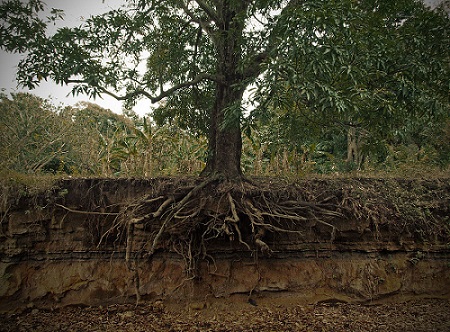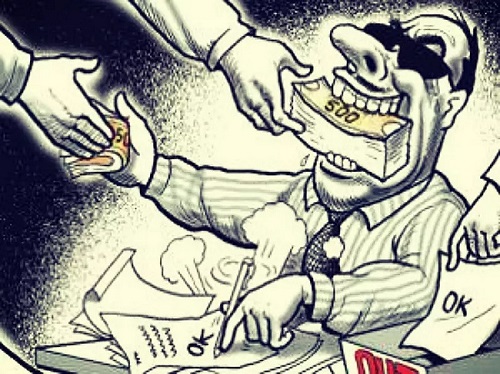
India with over 50% arable land (compared with 10.7% in Japan and 18.9% in US) was once known as the world’s cradle of civilization. Just a few centuries ago it was a thriving economy, and cannot be termed as a poor nation. The fact that it has remained a largely survival-economy during the past seven decades (post-independence) requires a deeper scrutiny and an analysis of the basic reasons.
Timelines mentioned in different phases are indicative
Enthused with the pride of independence, Indians of this era worked hard with great sense of integrity and nation building. Yet, this was the poorest of the periods, as national leadership made the following errors from wealth-creation perspectives.
1. Enterprise-Infanticide: Policies formulated were such that it destroyed the urge to enterprise for wealth creation and resulted in essentially low-end employment that triggered ‘brain-drain’ in later years. The brain-drain continues till date, as the negative ecosystem built then (that favours sycophancy and mediocrity) still persists.
The leaders of this era were highly charged patriots who meant well for all, yet they lacked clarity about the ‘Principles of Wealth Creation’. They wrongly believed that entrepreneurs are money driven greedy people and the state has primary role as wealth distributor. Due to their confusion about the role of private entrepreneurs, the nation suffered due to a controlled economy. Entrepreneurs were required to go through lengthy bureaucratic processes to obtain permissions to make value-added product or service. It only discouraged them, and many of them failed in setting up their enterprises. Harassed by inspectors, they even preferred to shut shop and eventually took up low-end jobs. Ironically, government considered collection of high taxes as their right but it killed incentives for doing greater amount of value-added work. Sadly, India remained poor in spite of the availability of material and human resources of the highest order, since state policies led to enterprise-infanticide and destruction of entrepreneurial eco-system at large.
2. Survival as Goal: Policies were such that the price of basic needs remained high to an extent that most people spent all of their time to acquire survival income, with no surplus time and little surplus wealth to pay for value-added products and services. This kept the nation trapped, near survival-orbit, unnecessarily.
Lack of surplus wealth also meant lower capital generation within the nation. This restricted the ability to invest in creating efficient infrastructure and connectivity across the nation. In the absence of smooth and efficient transport and mobility, the progress of further wealth-creation remained sluggish. India failed to leverage advantages of natural resources, by big-ticket initiatives, such as inter-connecting of its rivers despite flooding in one part and famine in another.
Price of basic needs remained high because of artificial shortages or systemic inefficiencies.
Public institutions and private businesses both remained constrained. India suffered with the greatest tragedy: There were people who could produce value-added goods, but majority of people as customers had little or no purchasing power, beyond survival needs. Thus, wealth that could be created was lost forever, and prosperity was denied.
Such self-killing policies led nation to suffer from two unfortunate consequences: One, majority ended up wasting their time in mundane ways, due to a lack of growth opportunity;
Two, national-wealth remained stuck at survival levels. Thus, options to grow surplus wealth remained minimal–the root cause of poverty-in-perpetuity.
Phase-2 (13 years / 1967-1980): Initiation of the Corrupt-Economy at Root Levels
While Phase-1 of India represented a time when people were poorer yet worked with commitment and integrity, Phase-2 defined a decline in basic values towards manipulative practices.

During this period, leadership began to justify ‘a little corruption’ as ‘minor issue’ and the corrupt-economy set in at the roots. This was when systemic and institutional damages began to happen. When a nation suffers from shortages and is a survival-economy, nexus among manipulative people in politics, administration and business is a natural outcome.
In a large nation like India, where complexities are huge, locations are distant, communications and infrastructure weak, this loss of integrity became the greatest enemy of future wealth creation. So the new trends favoured manipulators over genuine business entrepreneurs.
Gradually, integrity was relegated to the background and manipulators took over the driving seats, at all levels.
Phase-3 (10 years/ 1980-90): Rise of Corrupt Force as Leaders Across All Walks Of Life
Any society is generally driven by three forces: One, ‘Creative and Positive Force’, that facilitates prosperity for all; Two, ‘Corrupt and Negative Force’, that concentrates and misuses the power of money & governance; and, Three, ‘Complacent Crowd Force (masses)’ swayed by the dominant force between the first two.
Phase-3 in India was simply an extension of the trends set during Phase-2. Due to a lack of leadership having absolute conviction for integrity, the nation succumbed to greed which led to a rise of full-fledged corrupt economy. This happened because manipulative pragmatism was equated to practical smartness; and integrity with impractical idealism. Wealth creation suffered immensely as sanctity of systemic parameters such as institutional integrity and public accountability became major victims, from this phase onward. This gave rise to blatant corruption in all aspects of economy, which spared no one. Need of survival justified loss of integrity, while power of any form became key instrument to seek undue gains, through hidden agenda.

We thus saw a total collapse of integrity and distinct rise of negative manipulative forces as leaders in all walks of life. People of high integrity became mute observers or isolated players and the negative forces dominated. This happened because pressures of economic survival prevented people from standing up for what was right. Majority preferred to follow what and who could ensure their survival, instead. Sycophancy took over self-respect among common people. Power of money, thus, became largely concentrated with negative and manipulative forces within the society. People of integrity were required to work much harder for much lesser gains.
Integrity nurtured in Phase-1 largely gave in during Phase-3, to make ways for the manipulative forces by this time.
Phase-4 (11 years/ 1990-2011): Rise of Prosperity & Blatant Corrupt Forces
Indian economic growth since the 1990s is generally considered to be good. However, when we compare this phase of Indian economy with the initial twenty years (Phase-1, as explained above), these two phases appear to be reverse images of each other. The first twenty years reflect integrity intact, yet the nation was largely at the survival levels only. Whereas, the past twenty years or so—Phase-4, represents increased prosperity for a sizeable part of population with integrity conspicuously absent. It almost makes anyone to conclude, albeit wrongly, as if prosperity and integrity are inversely proportional ! As stated, this is far from truth. Everyone in any society has two opposite routes to become rich: Earned-money, which is through Creation of Wealth (CoW) versus easy money or say theft through manipulating, which is Transfer of Wealth (ToW). The newly found riches in India during the Phase-4 is largely dominated by Transfer of Wealth (ToW) activities and its champions, while responsibility of Creation of Wealth (CoW) is tied with poorer masses and hardworking middle class. As we see today, prosperity achieved through this ToW (Transfer of Wealth) route is nothing to feel happy about, as it’s anyways being lost with grave and painful damages, such as loan defaults, lost jobs, increased crime, crashed-bubbles in the stock markets etc.

Key factors of Phase-4: Positives & Negatives
Controls instituted during Phase-1 were removed during Phase-4, which in effect cleared the hurdles for entrepreneurial initiatives, thus triggering opportunities for exponential rise of economy. This was like unchaining of India, tied down unnecessarily during Phase-1 due to economic ignorance of the leadership of those times.
However, the overpowering negatives from Phase-4 that still persist are: Great deal of the rise in entrepreneurship largely remains with manipulative entities empowered during the
Phase-2 and Phase-3. And these negative forces are present in all sectors and at all levels, from peon to the president. As a result, the growth during this phase remains marred with exploitative pursuits, leading to concentration of capital in fewer hands, widening disparity and persistent poverty for half of the population. Larger share of surplus wealth of the nation remains tied-up in speculative or manipulative acts. Innovations and creative pursuits, which require self-respecting and merit-based ecosystem are still grossly neglected and remain in the back seats. So the brain-drain that was triggered during Phase-1 continued. ‘Money is supreme, no matter how you acquire’ has been the dominant mantra.
Yet, the ultimate positive relief for the nation is that creative and positive forces have also survived during Phase-4, thanks to empowerment through internet-based communications technology. Integrity driven initiatives were on the rise that found grass root support from a self-inspired new generation. This is the real ray of hope!
During Phase-4, while the Indian economy has been able to undo the damages caused by controls during Phase-1, it has also led itself to become a victim of manipulative forces who still are in the driving seats of economy. Reasons for man made poverty in any nation are driven by wrong policies and due to the nexus between corrupt political systems with manipulative private entities. It can lead to irreparable loss through creating artificial circles of survival, within which majority ends up wasting their time in unproductive activities.
India is a definite proof of man made poverty during the past seven decades. However, the advent of communications technology has become the greatest facilitator of creative leaderships. As such, one can hope to see the rise of creative leaderships with integrity and clarity during the next 20 years.
Phase-5 (2011 onward): Towards All-Round Prosperity With Honesty Intact. Is this a fond hope?
Seeds of transformation lie in the womb of Anna Hazare andolan (movemnet) in 2011. Nation’s spirit was awakened from within, to shed off dishonesty from governance. Experiencing deep-rooted corruption in daily lives, witnessing political class blatantly misusing power for personal and family benefits, nation was absolutely fed up. It is in this background that nation lost hopes from Congress and other family-driven parties and latched on to new faces who gave them hope. This was the reason Arvind Kejariwal won people’s heart in Delhi at that time, and Narendra Modi of the nation as whole! Nation continues to hope that a new breed of political leaders with conviction to integrity in personal and public life, rises from all corners.
India needs decisive and honest leadership, at all levels in all walks of life, to free the nation from entrenched clutches of deep-rooted corruption. The current central leadership has a strong will and conviction and has attempted to deliver a largely corruption free central administration over the past five years. How this initiative translates at multi layers in times to come, would decide the real fate of the nation. People must keep patience for a few years and apply themselves in doing their own work sincerely. It is also equally necessary for sustained long term correction that the leaderships of all political parties must gradually move into the hands of their honest, sincere, and capable persons.

Challenges Ahead
Many of these problems, initiated during the early twenty years post country’s independence continue to plague a large majority of our population who are stuck at survival-levels till date.
For instance, even today a large number of villagers–65% of the India’s total population– are unable to utilise their time optimally. In fact, 50% of their time remains grossly underutilized as they have little opportunity to create value-added surplus wealth. Hence, they are unable to increase their purchasing power, beyond survival-wealth. At the same time, thrust to a misguided urbanization policy has caused concentration of 30-40% of national wealth in larger metro cities like Mumbai and Delhi. This has led to a massive migration of villagers to the filthy slums of cities, in hopes of a better future. The tragic irony is that villagers remain idle during their surplus time, whereas people in metros waste three to four hours a day commuting for work. This unwanted commute everyday keeps the metro people away from their family for most of their working life.
Further, the rising price of a house is generally presented as an indicator of growing economy. However, in reality it reflects a loss in the prosperity of people! Remember, house is a basic need and its cost is merely a component of survival-wealth for computing prosperity. An average Indian may require whole life’s earnings to buy a small cage-like flat for Rs 50 lakh (say) of less than 300 sq ft in a metropolis like Mumbai. The high price of such apartments in large cities is only a notional feeling of being rich for the most and gives some psychological solace to the urban sufferers. They need to wonder whether they can ever afford to add an extra room from their earned income at such exaggerated price levels. How and who all are allowing such gross policy-errors or manipulations is an issue of concern. Everyone’s prosperity is affected negatively, for a lifetime.
The net effect is that majority of villagers may not have sufficient surplus-wealth, whereas nation’s surplus-wealth is converted into survival-wealth in cities to support the exorbitant cost of living in these cities. Worse still, the urban population has poorer quality of life due to paucity of space and natural environment. This colossal wastage of time and abilities is the prime cause for continuance of poverty in India.
In fact, conditions of our cities have become hell, while villages are deserted. Creation of entrepreneurial opportunities in villages is the only way out.
If misplaced policies of urbanization that lead to such existence for majority is not wealth-destruction then what it is. Imagine how much better it would be when villagers live where they belong and have opportunities to use their time to create surplus-wealth. Quality of life and prosperity of people in both cities and villages would be much greater then.
Reversal of migration, rather excessive urbanization as it exists today, is the policy need of 21st century. Does the new generation have conviction to see this transformation for a better tomorrow is the real question? Are people of India truly willing and ready for this litmus test? Time will tell.
